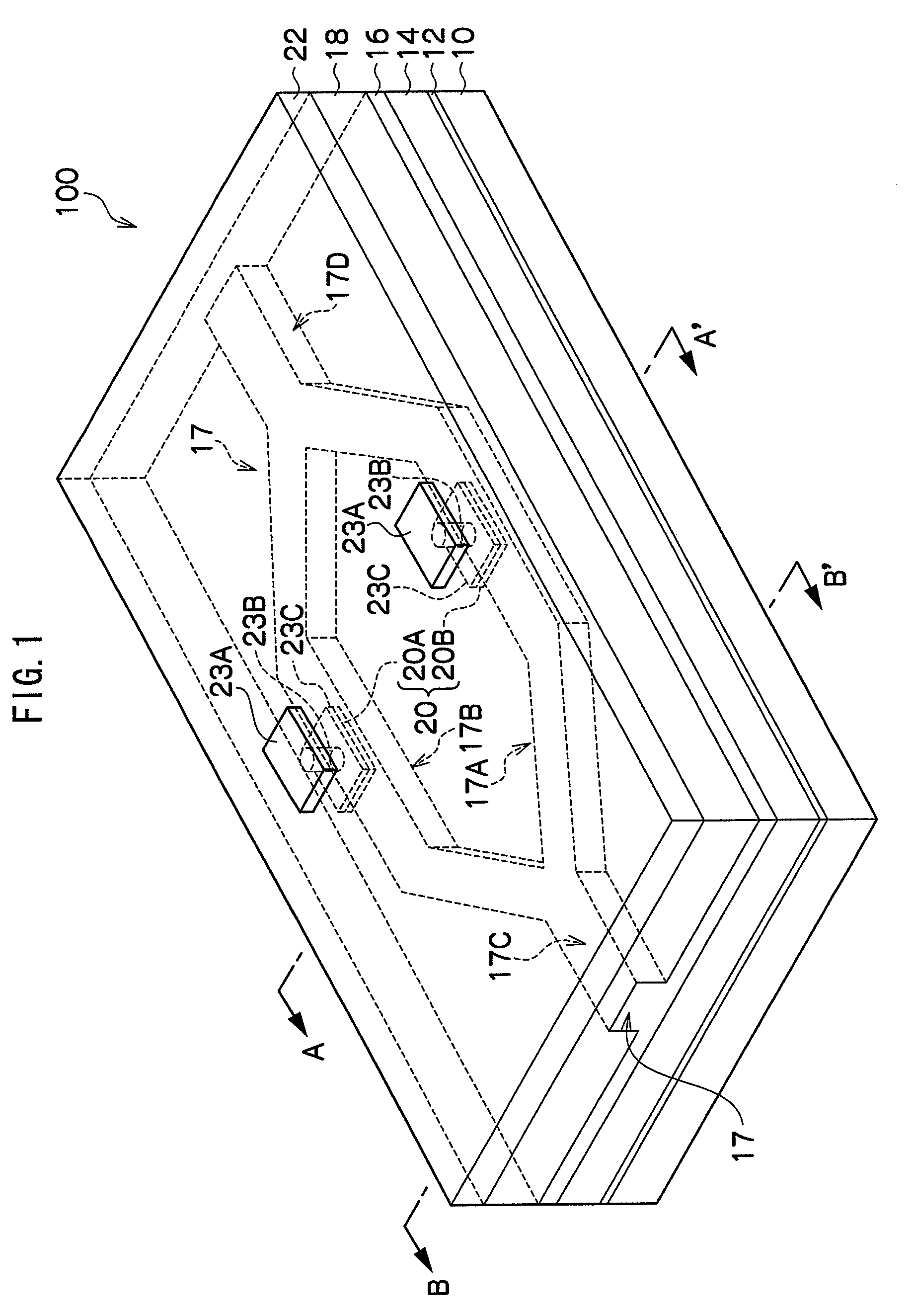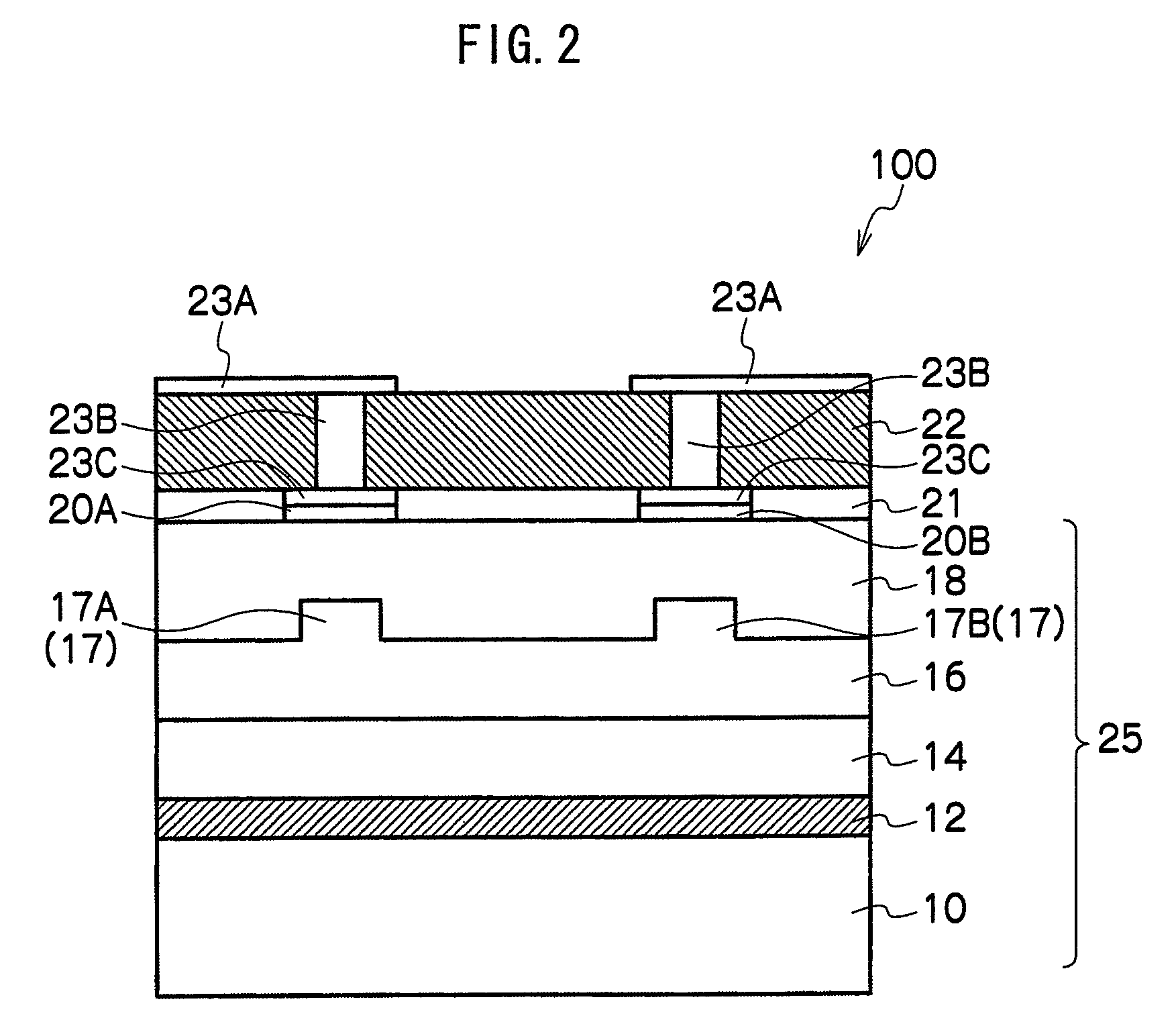Optical waveguide element
a waveguide and element technology, applied in the field of optical waveguide elements, can solve the problems of slow response speed, high manufacturing cost, and limited frequency region to which the element may be applied
- Summary
- Abstract
- Description
- Claims
- Application Information
AI Technical Summary
Benefits of technology
Problems solved by technology
Method used
Image
Examples
example 1
[0112]First, a solution including 77 parts by mass of cyclohexanone, 9 parts by mass of tetrahydrofuran, 10 parts by mass of polysulfone, and 4 parts by mass of Disperse Red 1 (trade name, manufactured by Tokyo Chemical Industry Co., Ltd.; hereinafter, may be referred to as DR1), assuming that the total mass of all of these materials (hereinafter, referred to as PS solution) is 100 parts by mass, is prepared as a solution of a non-linear optical material. The refractive index of a film formed from the material is measured by a prism coupling method and is confirmed to be 1.63.
[0113]Then, an Au layer having a thickness of 500 nm as a lower electrode is provided on a surface of a silicon substrate (diameter: 50.8 mm, thickness: 0.5 mm) by a sputtering method.
[0114]Then, an ultraviolet curable acrylic resin having a refractive index of 1.54 is applied as a lower cladding layer onto a lower electrode surface, and is irradiated with an ultraviolet ray, to form a cured resin film having a...
PUM
 Login to View More
Login to View More Abstract
Description
Claims
Application Information
 Login to View More
Login to View More - R&D
- Intellectual Property
- Life Sciences
- Materials
- Tech Scout
- Unparalleled Data Quality
- Higher Quality Content
- 60% Fewer Hallucinations
Browse by: Latest US Patents, China's latest patents, Technical Efficacy Thesaurus, Application Domain, Technology Topic, Popular Technical Reports.
© 2025 PatSnap. All rights reserved.Legal|Privacy policy|Modern Slavery Act Transparency Statement|Sitemap|About US| Contact US: help@patsnap.com



